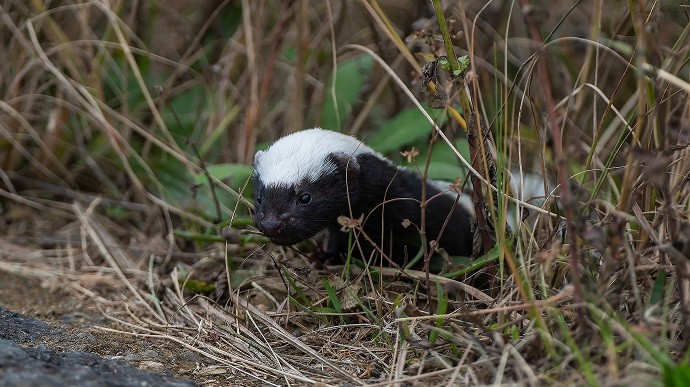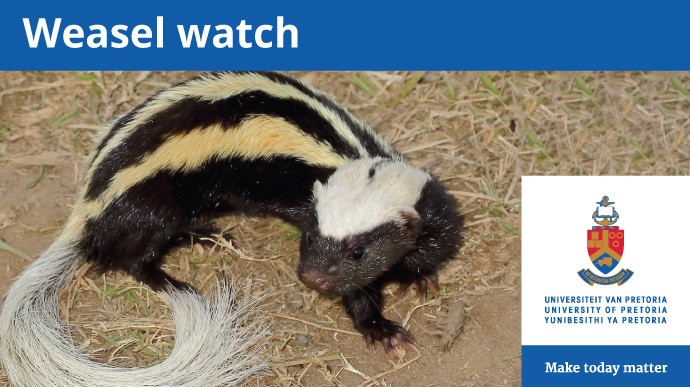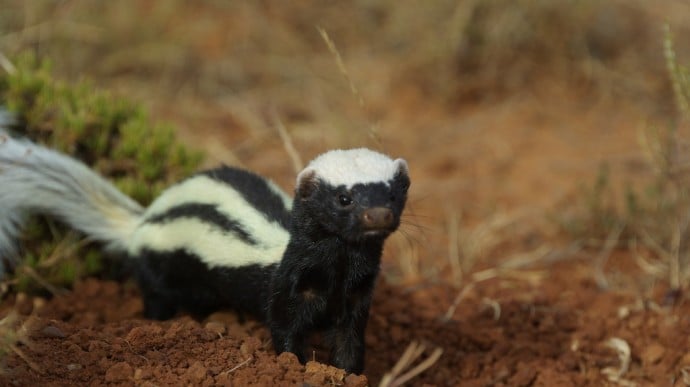Wildlife researcher and lecturer Professor Michael J Somers is recognised internationally as an expert in his field, and currently serves on four International Union for Conservation of Nature specialist advisory groups: African wild dogs, otters, wild pigs and small carnivores.
Born in Pietermaritzburg, he studied zoology, botany and wildlife management at the University of Natal (now University of KwaZulu-Natal) and the University of Pretoria (UP) before obtaining his PhD in zoology from Stellenbosch University.
Currently an Associate of the Mammal Research Institute at UP and a core team member of the Centre for Invasion Biology in the University’s Department of Zoology and Entomology, Prof Somers’ main research focus is on carnivore ecology, conservation and wildlife management.
Following a four-year stint in the field studying wild dogs in Zululand, he returned to teaching in 2001, a passion he discovered during his PhD studies.
His research output has also been prolific, having published 129 papers in peer-reviewed journals and book chapters, 40 other publications and two books (with a third book in press). He has also supervised or co-supervised 42 honours research projects, 21 research MSc and eight PhD students.
Research conducted with his students have covered a wide variety of subjects, including the impact of fencing on wildlife; studies on species ranging in size from spiders and crabs to predator species such as lion, cheetah and leopard, and whales; as well as studies on aphids, seed dispersal or the impacts of fire.
Last year, Prof Somers co-authored a paper voicing strong concern about the Animal Improvement Act (1998), cautioning that reclassifying several South African wildlife species as farm animals would not “improve” the genetics of the species and would instead have considerable negative genetic consequences and pose ecological and economic risks.
Prof Somers has also served as Editor-in-Chief of the South African Journal of Wildlife Research, Academic Editor of PLOS One and PeerJ, associate editor of Mammalian Biology and African Journal of Wildlife Research, and sits on the editorial boards of Koedoe and Nature Conservation Research.
Of the many wildlife species you have studied, is there one animal that fascinates you most?
African clawless otters, which I did my PhD on. Although you do not see them often, every encounter with them is memorable.
What attracted you to teaching?
I instantly liked teaching, and the students seemed to like my approach. Students want their lecturers to be engaging, humorous, wise and informative. At the start, I was young and naive, with no formal teaching training or the advantage of having read good books on teaching and learning, but I still got good feedback, which convinced me to follow an academic path. By the time the students graduate, they should also be able to use the knowledge, think independently, gather information themselves and be able to assess new knowledge.
With the rapid growth of Africa’s human population and disappearance of wild landscapes, are you optimistic that wild animals have enough space to survive?
It is context dependent. An increasing amount of land has been put under conservation, which is encouraging. An example of this is the Transfrontier parks. However, even in many African conservation areas, the numbers of animals are declining owing to the overuse of resources within these areas. We have a new project in West Africa, and I have been shocked to learn how few of even the large charismatic species such as lions and wild dogs are left there. Wildlife still needs more space and protection in that space.
You co-wrote a book on the pros and cons of fences for wildlife. Will fences ever disappear?
Although the preferred scenario is to have fences disappear, I do not believe they will go for the most part. Present reserves will continue to drop barriers to join others or become part of more extensive reserves. This is good for ecosystem functioning. Many reserves in Africa do not have fences but rather buffer zones, which sometimes work. As the human population expands and needs more resources, the reserves are put under increasing pressure, the buffer zones are not appropriately managed and the animals in the reserves are overharvested. Although not ideal, but as shown to be somewhat effective in South Africa, fencing some new areas, maintaining the fences and having effective law enforcement may be needed.
As a lecturer, what is your approach to instilling ethical behaviour in your students?
As we often see in the media, the wildlife sector (like any industry, really) is plagued by corruption and unethical behaviour. This includes poaching, wildlife theft and the poor treatment of animals. Our students are likely to encounter this after leaving university, so it is essential to alert them to this and try to instil in them a good work ethic and respect for wildlife as a whole, as well as for individual animals.
What do you do in your spare time?
I still enjoy game drives to watch animals, often in our local Rietvlei Nature Reserve. I also try to play the guitar.

 Story
Story
 Video
Video
 Infographic
Infographic
 Gallery
Gallery
 Story
Story
 Gallery
Gallery
Get Social With Us
Download the UP Mobile App